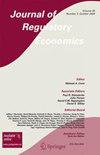The effects of stringent capital requirements on large financial institutions
IF 1.4
4区 经济学
Q3 ECONOMICS
引用次数: 1
Abstract
With the growing size of the interbank financial market, it is often argued that capital regulations for large wholesale banks should be more stringent than for small retail banks. This study constructs a general equilibrium model incorporating both wholesale and retail banks under capital regulation to discuss whether wholesale banks should face tighter leverage restrictions than retail banks. The simulations assuming various degrees of capital regulation on wholesale and retail banks show that stringent capital requirements for wholesale banks improve financial stability. The inefficiencies brought about by capital regulations are mitigated as a result of agents’ anticipation of stability. In contrast, capital regulations on both wholesale and retail banks destabilize the interbank market, because a large drop in asset prices reduces expectations that wholesale banks will be able to meet their obligations. These results imply that the stabilizing effect of capital regulation dominates inefficient asset allocation and thus provide theoretical support for the recent regulatory reforms imposing tight capital regulations on large influential financial institutions.严格的资本要求对大型金融机构的影响
随着银行间金融市场规模的不断扩大,人们常常认为,对大型批发银行的资本监管应该比对小型零售银行更严格。本文构建了资本监管下批发银行和零售银行的一般均衡模型,讨论批发银行是否应该比零售银行面临更严格的杠杆限制。对批发银行和零售银行进行不同程度的资本监管的模拟表明,批发银行严格的资本要求提高了金融稳定性。由于代理人对稳定的预期,资本管制带来的低效率得到了缓解。相比之下,对批发银行和零售银行的资本监管会破坏银行间市场的稳定,因为资产价格的大幅下跌会降低批发银行能够履行其义务的预期。这些结果表明,资本监管的稳定效应主导了低效的资产配置,从而为近期监管改革对有影响力的大型金融机构实施严格的资本监管提供了理论支持。
本文章由计算机程序翻译,如有差异,请以英文原文为准。
求助全文
约1分钟内获得全文
求助全文
来源期刊

Journal of Regulatory Economics
ECONOMICS-
CiteScore
2.40
自引率
0.00%
发文量
14
期刊介绍:
Recent legislative and policy reforms have changed the nature of regulation. Partial deregulation has created a new dimension to regulatory problems, as the debate is extended to include diversification and new forms of regulation. The introduction of incentive-based rate schedules and ratemaking procedures, the integration of demand-side programs with planning for capitol expansion, and other developments, raise a host of theoretical and empirical questions. The Journal of Regulatory Economics serves as a high quality forum for the analysis of regulatory theories and institutions by developing the rigorous economics foundations of regulation. Both theoretical and applied works, including experimental research, are encouraged. Research in all aspects of regulation is of interest including traditional problems of natural monopoly, antitrust and competition policy, incentive regulation, deregulation, auction theory, new policy instruments, health and safety regulation, environmental regulation, insurance and financial regulation, hazardous and solid waste regulation, universal service obligation, and consumer product regulation. The JRE provides researchers, policy-makers, and institutions with current perspectives on the theory and practice of economics of regulation. While there are a number of journals and magazines that include the study of regulation, the JRE is unique in that it fills a gap in the market for a high quality journal dealing solely with the economics of regulation.Officially cited as: J Regul Econ
 求助内容:
求助内容: 应助结果提醒方式:
应助结果提醒方式:


